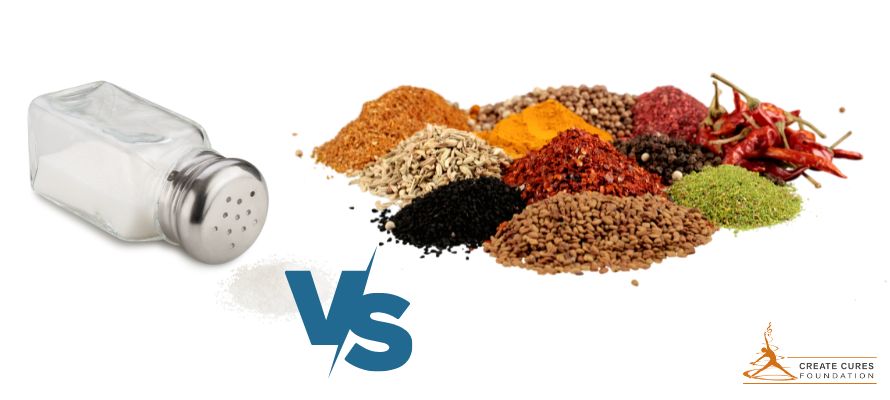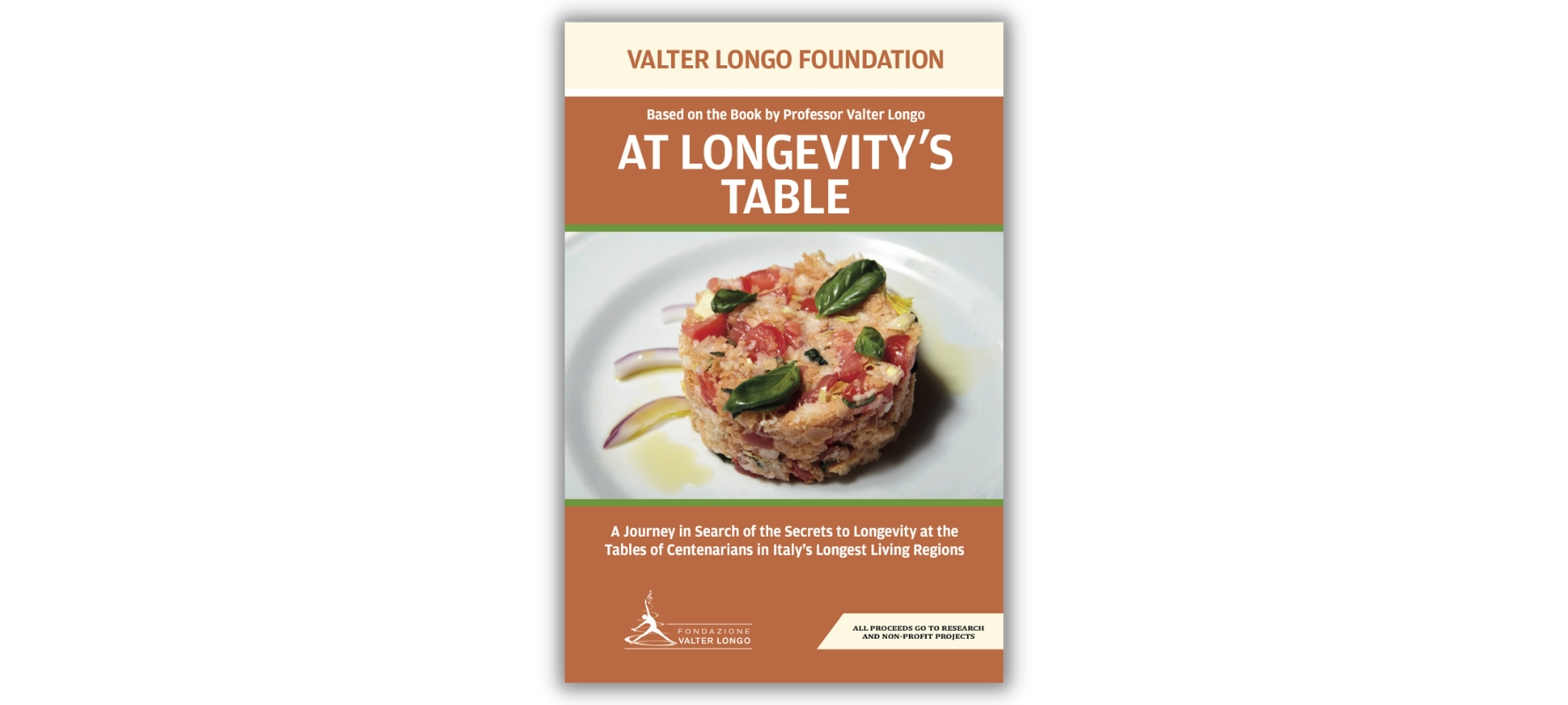Artículo en español después de la versión en inglés
The new scientific publication in ‘Nature Communications’ reveals which form of fasting makes these results possible.
“This is the first study to show that a food-based intervention that does not require chronic dietary changes or other lifestyle changes can make people biologically younger.” With this statement, Professor Valter Longo summarizes the key message of a new scientific publication in “Nature Communications” (https://pubmed.ncbi.nlm.nih.gov/38378685/).
The study is based on the analysis of participants in two different clinical studies, who carried out three 5-day fasting-mimicking diet cycles. Researchers found that following the fasting-mimicking diet resulted in a reduction in biological age and a lower risk of developing age-related diseases such as cancer, diabetes, and heart disease. Participants were therefore healthier and younger, by around 2.5 years.
What the study consists of
The fasting-mimicking diet, developed at the USC Leonard Davis School of Gerontology in California, USA, is an innovative diet designed to mimic the effects of water-only fasting while still providing all the essential nutrients. The clinically tested protocol consists of a five-day low-calorie diet rich in “healthy” unsaturated fats and low in proteins and simple carbohydrates.
Fewer illnesses, thanks to fasting and refeeding cycles
The study also highlights how intervention strategies on aging processes should begin early in adulthood to effectively mitigate the cellular and molecular damage that accumulates over time. Alternating fasting-mimicking diet cycles with periods of refeeding in the long term facilitates the elimination of damaged cellular components and allows cellular regeneration, effectively counteracting age-related deterioration.
The decrease in biological age, when following 3 cycles of fasting-mimicking diet per year, between the ages of 50 and 70 can be up to 11 years younger.
Previous research by Professor Longo has indicated that short periodic cycles of fasting-mimicking diets can promote various metabolic benefits: in particular, optimization of cholesterol, blood pressure, triglycerides, blood sugar, inflammation, and IGF-1 (an insulin-like growth factor, which can be considered a risk factor for oncological diseases) values. Furthermore, it was mainly participants with high initial risk factor values who experienced more pronounced improvements after the fasting-mimicking diet intervention, underlining its potential as a personalized therapeutic approach. The improvement of these parameters allows us to counter metabolic syndrome, a widespread condition linked to the presence of other diseases and cardiovascular mortality. The new findings, published in the journal “Nature Communications”, revealed that those in the fasting-mimicking diet group had less abdominal and liver fat, a key indicator of metabolic health. Participants also showed a lower risk of diabetes, with, in particular, lower insulin resistance and reduced levels of glycated hemoglobin (crucial markers in diabetes control).
The new study therefore confirms how the optimization of these parameters lowers the risk of developing the main chronic non-communicable diseases such as diabetes, cancer, cardiovascular diseases, and neurodegenerative diseases, such as Alzheimer’s.
Rejuvenation of the immune system Yet another element to consider is an increase in the lymphocyte-myeloid ratio, an indicator of a younger immune system. An increase in the lymphocyte-myeloid ratio indicates that there are more lymphocytes in the immune system, that is white blood cells that play a crucial role in adaptive immunity, compared to myeloid cells, involved in innate immunity. This increase is interpreted as a sign of a younger or more active immune system. Since lymphocytes are associated with specific and targeted immune responses, a greater ratio suggests greater efficiency of the immune system in responding to external challenges. The fasting-mimicking diet, as shown in the data published by this innovative scientific research, seems to exert positive effects on the immune profile, with evidence suggesting rejuvenating impacts on the immune system, similar to what has been observed in animal studies.In fact, aging is often accompanied by immunosenescence, characterized by an altered production and function of immune cells, which lead to greater susceptibility to disease.
The results of the new study appear to be independent of weight loss, which is achieved with calorie restriction. The effect is therefore not secondary to weight loss, but specific to this protocol.
In conclusion, accumulating evidence appears to support the role of the fasting-mimicking diet as a promising intervention to promote health extension and mitigate age-related health decline. Further research and longitudinal studies are needed to clarify the long-term effects and optimize the implementation of the said regimen for personalized health management strategies. How to eat between one fasting cycle and another?Everyday nutrition, as a whole, also affects long-term health. Studies on aging and nutrition in simple organisms, rodents, monkeys, and humans have made it possible to link longevity to conserved metabolic and growth pathways to define their role in aging and age-related diseases. A viable and effective nutritional strategy in delaying aging and/or preventing disease is the “Longevity Diet”. Its characteristics are based on the analysis of scientific studies but also on the habits of healthy centenarians. Personalization of the Longevity Diet, which also includes the fasting-mimicking diet, is crucial in optimizing lifespan and health. It is important, for any form of fasting, to be followed by a professional expert in the application of these protocols, given the high risks of a do-it-yourself approach. To evaluate personalized strategies, the nutritionists of the European Longevity Institute at the non-profit Valter Longo Foundation, trained by Professor Valter Longo, are available at the email address [email protected].
🇪🇸 ¿Cómo reducir la edad biológica y disminuir el riesgo de desarrollar enfermedades crónicas?
La nueva publicación científica en Nature Communications revela que forma de ayuno hace posible estos resultados.
“Este es el primer estudio que demuestra que una intervención basada en la comida que no requiere cambios dietéticos crónicos u otros cambios de estilo de vida puede hacer a las personas más jóvenes biológicamente.” Con esta declaración el Profesor Valter Longo resume el mensaje principal de una nueva publicación científica en Nature Communications (https://pubmed.ncbi.nlm.nih.gov/38378685/).
El estudio se basa en el análisis de participantes en dos distintos estudios clínicos, que efectuaron tres ciclos de dieta mima-ayuno (que imita al ayuno) de 5 días. Los investigadores descubrieron que las personas que siguieron la dieta mima-ayuno habían tenido como resultado una reducción de su edad biológica y menor riesgo de desarrollar una enfermedad ligada al envejecimiento como el cáncer, diabetes y enfermedades cardíacas.
Los participantes eran, por lo tanto, más sanos y resultaron más jóvenes, por cerca de 2.5 años.
En qué consiste el estudio
La dieta mima-ayuno, desarrollada en la Escuela de Gerontología Leonard Davis de USC en California, EUA, es una dieta innovadora diseñada para simular los efectos del ayuno de sólo agua, mientras proporciona todos los nutrientes esenciales. El protocolo, clínicamente probado, consiste en un régimen alimenticio hipocalórico de cinco días rico en grasas insaturadas “saludables” y bajo contenido de proteínas y carbohidratos simples.
Menos enfermedades, gracias a los ciclos de ayuno y realimentación
El estudio resalta, además, como las estrategias de intervención sobre los procesos de envejecimiento deberían iniciar de manera temprana en la edad adulta para mitigar eficazmente los daños celulares y moleculares que se acumulan con el pasar del tiempo. Alternar los ciclos de dieta mima-ayuno con periodos de realimentación a largo plazo facilita la eliminación de los componentes celulares dañados y permite la regeneración celular, contrarrestando efectivamente el deterioro ligado a la edad.
La disminución de la edad biológica, cuando se hacen 3 ciclos de dieta mima-ayuno al año, entre los 50 y 70 años puede hacer que se llegue con 11 años menos.
Investigaciones precedentes a las del Profesor Longo han indicado que breves ciclos periódicos de dieta mima-ayuno pueden promover diversos beneficios sobre el metabolismo. En particular, una mejora en los valores de colesterol, presión arterial, triglicéridos, glucemia, inflamación e IGF-1 (un factor de crecimiento similar a la insulina, que puede ser considerado como un factor de riesgo para enfermedades oncológicas). Además, sobre todo los participantes con valores iniciales de factores de riesgo elevados son quienes experimentan un mejoramiento más pronunciado después de la implementación de la dieta mima-ayuno, resaltando su potencial como enfoque terapéutico personalizado.
El mejoramiento de estos parámetros permite contrarrestar el síndrome metabólico, una condición ampliamente distribuida ligada a la presencia de otras enfermedades y con la mortalidad cardiovascular.
Los nuevos resultados, publicados en la revista Nature Communications, revelaron que aquellos que formaron parte del grupo dieta mima-ayuno tuvieron menor grasa abdominal y hepática, un indicador clave de la salud metabólica. Los participantes mostraron también un menor riesgo de diabetes, con una particular resistencia menor a la insulina y niveles reducidos de hemoglobina glucosídica (marcadores cruciales en el control de la diabetes).
El nuevo estudio confirma por lo tanto como la mejora de estos parámetros disminuye el riesgo de desarrollar las principales enfermedades crónicas no transmisibles como diabetes, cáncer, enfermedades cardiovasculares y enfermedades neurodegenerativas, como el Alzheimer.
Rejuvenecimiento del sistema inmunitario
A todo esto, se le añade un aumento de la proporción linfocitos-mieloides, indicador de un sistema inmunitario más joven. Un aumento de la proporción linfocitos-mieloides indica, de hecho, que en el sistema inmunitario hay más linfocitos, glóbulos blancos que llevan a cabo una función crucial en la inmunidad adaptativa, respecto a células mieloides, involucradas en la inmunidad innata. Este incremento se interpreta como signo de un sistema inmunitario más joven y activo. Debido a que los linfocitos están asociados a la respuesta inmune específica y dirigida, una mayor cantidad de estas células sugiere una mayor eficiencia del sistema inmune para responder a los desafíos externos.
La dieta mima-ayuno, con base a la lectura de los resultados publicados de tal investigación científica innovadora, parece ejercer efectos positivos sobre el perfil inmunitario, con pruebas que sugieren impactos rejuvenecedores sobre el sistema inmunitario, similares a los observados en estudios en animales.
A menudo, de hecho, el envejecimiento es acompañado de la inmunosenescencia, caracterizada por la producción y función alterada de las células inmunitarias, que llevan a una mayor susceptibilidad a enfermedades.
Los resultados del nuevo estudio parecen ser independiente de la pérdida de peso, que se obtiene como resultado de la restricción calórica. El efecto no es por lo tanto secundario de la pérdida de peso, pero específico de este protocolo.
En conclusión, las pruebas acumuladas parecen apoyar el papel de la dieta mima-ayuno como intervención prometedora para promover la extensión de la salud y mitigar el declive de la salud ligado a la edad. Investigaciones adicionales y estudios longitudinales son necesarios para aclarar los efectos a largo plazo y optimizar la implementación de dicho régimen para estrategias personalizadas de gestión de la salud.
¿Cómo comer entre uno y otro ciclo de ayuno?
Incluso la alimentación de todos los días, como un todo, influye en la salud a largo plazo.
Estudios sobre el envejecimiento y la nutrición en organismos simples, roedores, simios y seres humanos han permitido conectar la longevidad con vías metabólicas y de crecimiento conservadas para determinar su papel en el envejecimiento y en las enfermedades relacionadas con la edad. Una estrategia nutricional práctica y eficaz en el retardo del envejecimiento y/o prevención de las enfermedades es la “Dieta de la Longevidad”. Las características de la cual se basan en el análisis de estudios científicos, así como también en los hábitos de los “centenarios” sanos.
La personalización de la dieta de la longevidad, que comprende también la dieta mima-ayuno, es crucial en la mejora de la duración de la vida y la salud. Es importante, cual sea la forma de ayuno, ser orientado por un profesional experto en la aplicación de tales protocolos, dado los altos riesgos de hacerlo por uno mismo. Para evaluar las estrategias personalizadas, los nutricionistas del Instituto Europeo de la Longevidad de la Fundación Valter Longo Onlus, formados por el Profesor Valter Longo, están a disponibilidad en el siguiente correo electrónico: [email protected]











